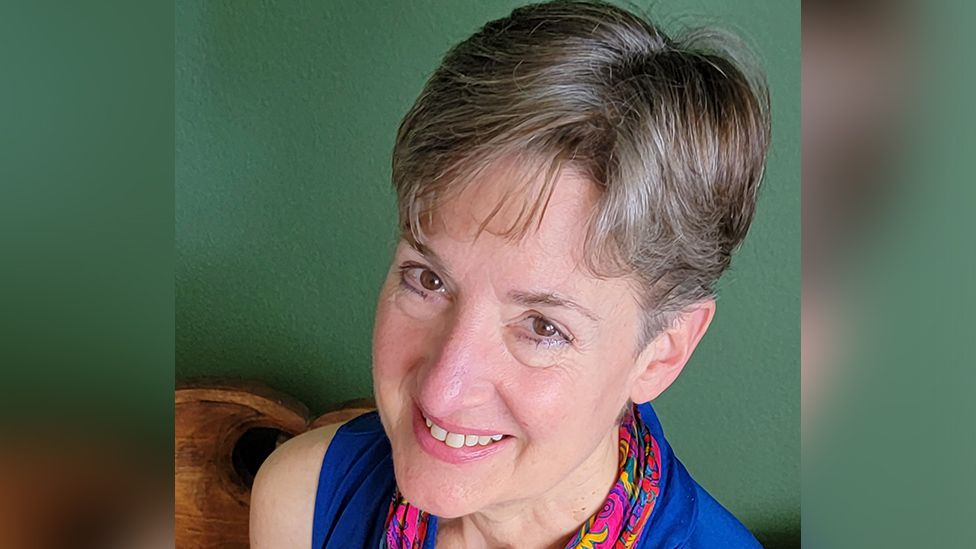ARTICLE AD BOX
 Image source, CBS
Image source, CBS
Ana Montes after her release from prison
By Chelsea Bailey
BBC News, Washington
Ana Belén Montes appeared demure as she posed for a photo soon after her release from 20 years in prison. Now nearly 66 years old, her brown hair is streaked with grey.
There was little to suggest that Montes had spent years as a secret Cuban agent embedded deep inside the United States government. Or that she was once considered by America to be one of the most dangerous intelligence operatives targeting the nation.
And that, experts say, is exactly what made her the perfect spy.
Needle in a haystack
Ana Montes was arrested on September 21, 2001, and ultimately found guilty of conspiracy to commit espionage against the United States.
By then, US intelligence officials had been searching for a Cuban mole inside the government for nearly a decade but discovering who was passing classified intel to the Cubans proved to be a monumental task.
"It really is a needle in a haystack," said Pete Lapp, a retired FBI agent who along with his partner, Steve McCoy, was a part of the team that was instrumental in proving Montes was a Cuban spy.
Lapp and his team were tasked with flushing out the mole. To make matters more complicated, Mr Lapp said the Cubans also worked to mask Montes' gender by suggesting that the spy was a man with high-level clearance, which widened the list of potential targets.
"It would have been a much easier task if we knew we were looking for a woman," he said.
It turned out the FBI was not only searching for a woman, but a top US intelligence official on Cuba and Central America.
The Queen of Cuba
With Montes, Cuba played a long game. She was tapped to spy on behalf of their government before she even finished graduate school and as a result, Mr Lapp said, she joined the United States Defence Intelligence Agency as "a fully recruited agent of the Cuban intelligence service."
"She did a good job of being near-perfect, everything she accomplished as an analyst only built up a wall of security around her," he said.
Ana Montes worked her way up through the ranks of US intelligence services, first on a portfolio for El Salvador and Nicaragua, before moving on to become a top intelligence operative studying Cuba. Inside the agencies, her expertise earned her the nickname The Queen of Cuba.
But for nearly 17 years she also passed some of the nation's most top-secret information to a hostile foreign government.
Image source, FBI
Image caption,Ana Montes after her arrest in 2001
"One of the reasons I think she never got caught was she largely memorised the information that she took away," said Jim Popkin, whose book, Code Name Blue Wren, charts Montes' rise through the ranks and her ultimate capture.
"She had her day job where she just sat quietly, studiously and memorised as much as she could of these classified documents. And then her night job was going home, typing it up in a Toshiba laptop, encrypting it and passing it on to her handler."
Instead of working for money, Montes would later tell officials she spied on the US because she disagreed with her government's interventionist policies in Central America and Cuba.
"She was particularly dangerous because she provided the true identities of American operatives working in Cuba," Mr Popkin said.
That information alone could have jeopardised lives, but Montes also revealed the existence of a multi-billion-dollar stealth satellite that the US used to spy on Russia, China and Iran.
"That's why intelligence officials call her one of the most damaging spies in American history, and I argue, the most damaging female spy that we've ever had," Mr Popkin said.
A web of deception
By 2000, intelligence officials suspected Montes was the possible spy and Mr Lapp and his team zeroed in on her as a suspect.
"I was adamant, let's not focus on catching her in the act of espionage. Let's make sure we got the right person first," Mr Rapp said.
After years searching for the mole, a breakthrough came over Memorial Day weekend in 2001, when Lapp and his team searched Montes' home and uncovered more than a decade of classified intel on a laptop under her bed.
"I thought, holy [expletive]," said Mr Lapp, who will detail his investigation in an upcoming book called Queen of Cuba.
Image source, US Department of Defense
Image caption,Montes receives a National Intelligence Certificate of Distinction from George Tenet of the CIA
For Montes, leading the compartmentalised life of a spy not only meant lying to the nation's highest intelligence agencies, but it also meant lying to the people closest to her - including her family.
Four of her close family members worked in the Federal Bureau of Investigations including her sister, Lucy. Like the rest of the world, they learned Montes was a spy for the Cuban government the day she was arrested.
Mr Popkin, who has spent time interviewing the family for his book, said at the time of her arrest the family's anger at her betrayal was tinged with relief.
"It did give [Lucy] some relief just to be able to understand a little bit more about her sister and why their relationship, which had once been so close, had deteriorated over the years," he said.
Ana Montes served most of her 25-year sentence in prison and was released on 6 January.
Now that she out of prison and back in her home in Puerto Rico, Montes said she hopes to live "a quiet and private existence."
But within hours of her release, Montes also indicated that she was still thinking of Cuba.
"I encourage those who wish to focus on me to instead focus on important issues, such as the serious problems facing the Puerto Rican people or the US economic embargo on Cuba," she said in a statement shared with BBC News through her lawyer, Linda Backiel.
"Who in the last 60 years has asked the Cuban people if they want the United States to impose a suffocating embargo that makes them suffer?"
But for Mr Lapp, and the men and women who fought to bring her to justice for years, Montes' freedom came as a blow.
"I knew this day was coming, but it doesn't mean that it still doesn't sting," he said.

 2 years ago
97
2 years ago
97








 English (US) ·
English (US) ·